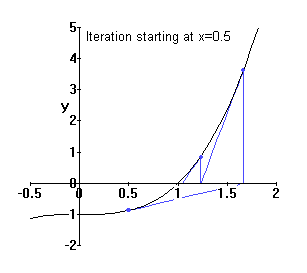
| In this case, formula (2) becomes
|
 |
| If we choose x0=0, we are in trouble, since the tangent is horizontal, f '(x0)=0 and formula (*) crashes. Furthermore, if we choose a different x0 which eventually "lands" on xn=0, we have the same problem. The graph at right shows this in red for x0=-1.434, which crashes in 2 steps in this manner. There is an infinite sequence of "bad" negative points like this. Note that if we choose an initial guess very close to such a bad point, xn will eventually become close-but-not-equal-to 0, and then xn+1 will get blasted way out to the right and from there eventually converge to x=1. The closer we began to a bad point, the more steps it will take to get "reasonably close" to x=1. [The previous statements all require some work to prove. Skipped.] An example of this is shown in blue. | 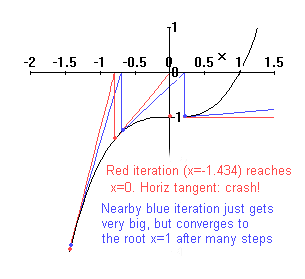 |
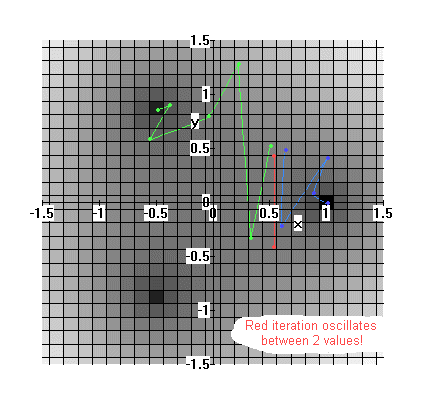
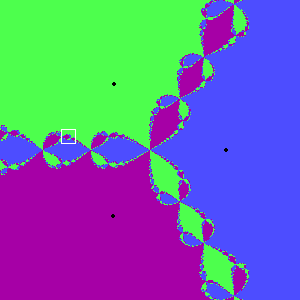 >>
>> 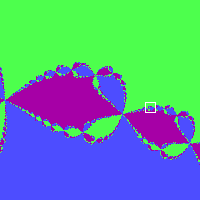 >>
>> 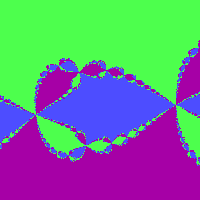
Fractals are images which generally exhibit
the following related 2 properties: [details beyond the scope of the course]
|
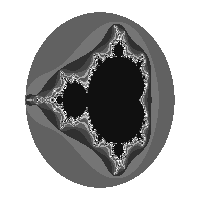 |
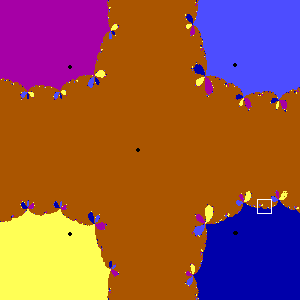 >>
>> 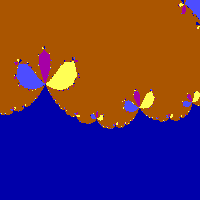
| Finally, instead of colouring our picture
by which root z0 converges to, we can instead measure how many
iterations of formula (2) it takes to get zn "really close"
to the root it converges to ("really close" means to some fixed small distance).
Then we get pictures like the one at right (for our cubic example). The
closer the colour is to white, the more iterations are required. It clearly
shows how complicated the situation is near to the rays dividing the plane
into 3 sections.
|
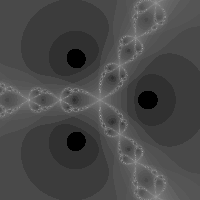 |
(Pictures drawn using Maple, Fractint, and a bit of tweaking.
This page and the first 3 pictures are copyright (c) 1999,
Martin Pergler)